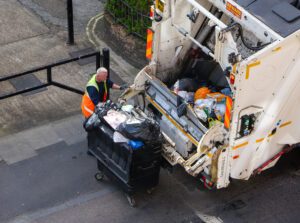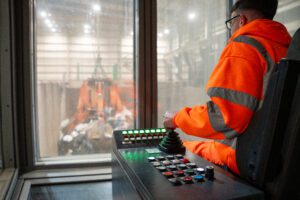The Environmental Services Association (ESA) presented interim findings of a recent study appraising options for future residual waste treatment at RWM this week. The findings suggest that the current policy trajectory and associated investment-drivers risk undermining carbon emissions reduction and the waste hierarchy if not addressed.
Presenting on the EfW and Bioenergy Stage on day one of RWM, the ESA’s Head of Climate and Energy Policy, Charlotte Rule, explained that Government had set out the “milestones” for the future of residual waste treatment, “but not the pathway”, which is why the ESA had commissioned SLR consulting to examine options for managing residual waste in relation to emerging policies for the sector, and in the context of economics, deliverability, reliability and climate change impact.
At the event, Charlotte presented the multiple intertwined policy areas that will impact upon the future complexion of residual waste treatment, which sit across at least four Government departments – Defra, DESNZ, the Department for Transport (DFT) and Treasury – all of which will have a significant impact on future infrastructure decisions.
Presenting the interim outputs of the study, SLR’s Technical Director, Paul James, explained that the options appraised included Landfill, Energy-from-Waste (EfW), EfW with Carbon Capture and Storage (CCS) and Sustainable Aviation Fuel (SAF) Production (using residual waste as feedstock and a gasification/Fischer Tropsch process). Options were limited to these four solutions in the context of the UK’s substantial existing infrastructure.
Each of these was assessed against the criteria of cost, reliability/deliverability and carbon impact.
The study found that the cost of adding Carbon Capture to EfW facilities was likely higher than paying the anticipated Emissions Trading Scheme (ETS) costs on carbon emissions for most EfW facilities and, as such, the ETS may not unlock investment in carbon capture without a mechanism to value the negative emissions this could deliver. It also concluded that, without intervention, landfill could become a cheaper treatment option than EfW with ETS costs applied.
Additionally, it the study found that a high subsidy on SAF could result in a lower residual waste treatment price (gate fee) compared with EfW – although it noted that SAF production costs were highly uncertain at this stage owing to a low degree of demonstration at scale.
The study found that EfW with CCS offers the greatest reductions on CO2e emissions of the appraised options, but that SAF only became competitive on carbon reduction with a very high percentage of organic feedstock content.
In summarising the report, Paul said that the current policy landscape risked undermining the waste hierarchy and that there was a risk of policy decisions diverting waste to lower performing options for carbon emissions – while also undermining the vital sanitation function provided by the existing EfW fleet.
He said: “Waste needs to keep moving and it’s a 24/7 job. The infrastructure we have was built primarily to stop waste from building up in the streets. In this context, EfW is extremely reliable.
Adding CCS to EfW is relatively straightforward but the biggest issue for CCS at the moment is that there’s not a huge amount of experience of the ‘storage’ element – which is its biggest Achilles heel currently.
There are concerns over the technology readiness of SAF and it only really gets interesting with very high levels of organic feedstock.
“It’s important that we have EfW in future to deal with waste streams we don’t yet know about, and something needs to be done to better value the sanitation role that these EfW technologies play.
EfW sits on the boundary of resources, energy and carbon policy with lots of government departments with their finger in the pie. It’s a complex policy web and cross departmental policy coordination is essential.”
A report detailing the full study is expected to be published by the ESA in Q4 2024. Click here if you would like to register to receive a copy of this and the ESA’s other publications in future.




